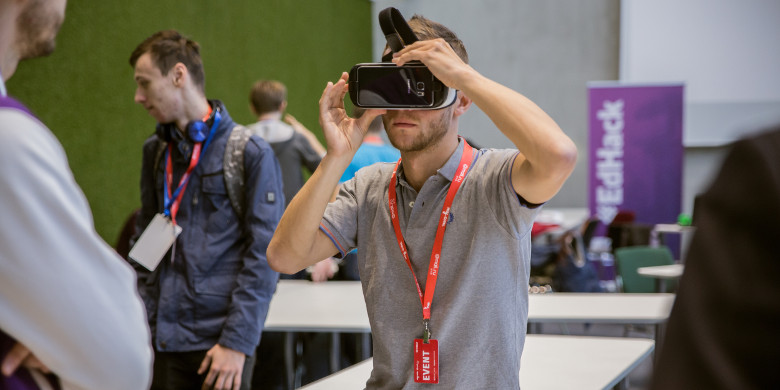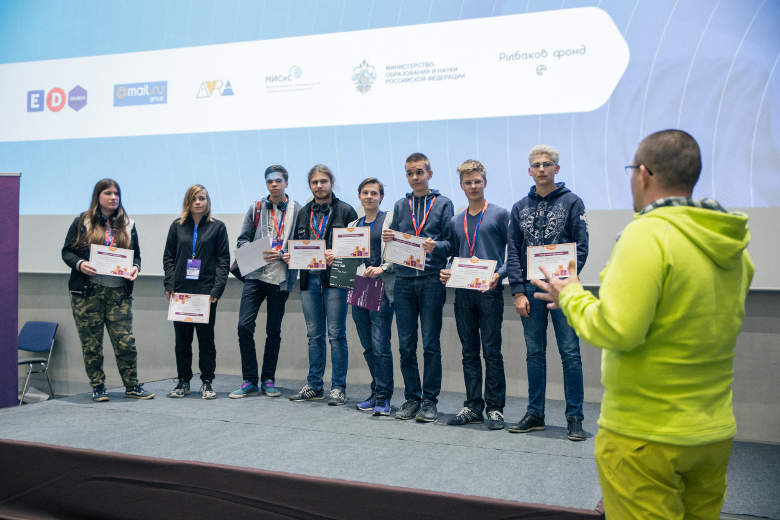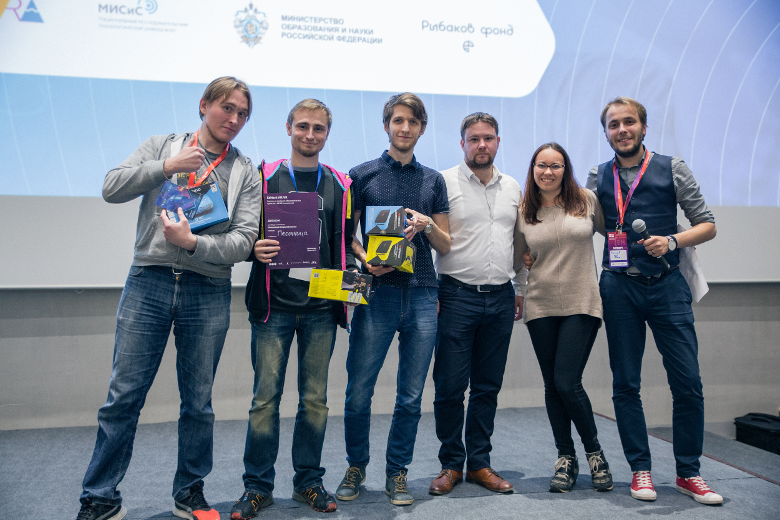EdHack 2017 results - AR and VR in education

On September 23-24, our office hosted EdHack AR / VR, a hackathon dedicated to the use of augmented and virtual reality technologies in education. We gathered more than 250 developers, designers, managers and just ideological inspirers interested in the transformation of the educational process. Compete for the title of winners came teams from all over Russia and even a team from Boston, USA.
In just one day, the participants implemented 23 projects: from virtual school laboratories to learning the professions of the future. The organizers were Rybakov Fund, NITU MISiS, and the co-organizer was AVRA (Association of Augmented and Virtual Reality) as the leading association of AR / VR professionals and CIS companies. Together with partners Mail.Ru Group, Dell, HTC, Samsung, Tesla Suit, TASS, Yode Group, Homido provided participants with Samsung VR glasses and cameras, HTC Vive helmets, Homido and HP Windows Mixed Reality, Dell computers for development, testing and AR / VR product demonstrations.
In the “Virtual Laboratory” nomination, the Red Birds team won, which demonstrated a virtual simulator of fire cases in an apartment that are unprofitable, difficult or dangerous to simulate in reality. It is suitable for rescuers training and life safety training.

Team "Red Birds" with the project of a virtual simulator of cases of fire in the apartment
In the nomination "Corporate training" the victory was won by the Real Service team. She proposed a solution to improve the training of hotel and restaurant workers. The ARKit project in augmented reality shows how to properly set the table, and allows you to practice this difficult task. The idea came from the developers while working in the company "Alphabet of Taste." The application can be interesting including brides who are preparing for the perfect wedding.
In the “Training and Communication” nomination, the victory went to the Reality Family team. Her AR application allows anyone to play the piano or synthesizer. When you hover the camera of a smartphone on the piano, labels appear on the screen, suggesting which key and how long to hold. The guys plan to expand the project and adapt it for Mixed Reality. The application uses the Unity3D engine, SDK ARToolKit 5 and Asset FileBrowser.
It all starts with the FileBrowser file manager (you can enter it by clicking on the “Select file” button in the UI), in it we can select the MIDI file, which will later go to the parser. The parser of MIDI files binary reads a MIDI format file, receives notes from it (there are 128 of them in MIDI), and then the received notes are converted into seven standard notes of the first octave from the matching table and output from the parser in the format of a list from seven variable bool arrays .
When you click on the "Start" button, ARToolKit enters the work. When a pre-trained tag is detected, in accordance with its position in space, a graphic display of notes, represented by square textures, the work of which is written in a separate class, is superimposed on the camera image. This class only positions the textures in space, that is, sets the distance from the label, the distance between textures and their size. The speed of movement of the textures is determined by a predetermined number, which can be changed using the “+” and “-” buttons in the UI.

The VR Labs team with the Luch project: virtual laboratory work on optics for students of physical and technical faculties
In addition to the stated nominations, the teams could perform a special task and receive support from partners EdHack AR / VR. For example, the MTS company chose the project “Beam” of the VR Labs team, which created virtual laboratory work on optics for students of physical and technical faculties.

The team "Sandbox" with the application for the assembly of electrical circuits in augmented reality in physics class
And “Open School” noted the team “ Sandbox ” with its application for assembling in physics lessons of electrical circuits in augmented reality. It clearly duplicates and complements school material, allowing you to interact with the objects of the experiment in a game form. This approach contributes to better memorization and understanding of the material. For example, in the chapter of the textbook on reactive power, schoolchildren will see a rocket taking off, be able to change the mass of fuel, the mass of the rocket, other system parameters and get a take-off consistent with real physical laws.
In addition, participants could get advice from experts, mentors and jury representing leading companies and institutions: Alexander Lukichev from DVR, Anatoly Ivanov from Fibrum, Sergey Paskhalov from Yode Group, Ekaterina Filatova from AVRA, Dmitry Gritsan from Microsoft, Diana Hovhannisyan from MAROG Creative Agency, Viktor Chertopolokhov from Moscow State University named after MV Lomonosov, Alexey Kalenchuk from the Skolkovo Foundation, Timofey Golovin from NUMA, Yevgeny Borisov from VORTEX Pictures, Andrey Ivashentsev from Game Insight, Dmitry Kurin from MTS, Yevgeny Voloshin from the network Magnet, Anatoly Suzdaltseva from Gene ral VR.

The winners and prize-winners of the hackathon received Samsung Gear 360 cameras, Homido helmets, educational certificates from Unity, Moscow State University named after MV Lomonosov, “Netology” and Skyeng English schools, as well as gifts and souvenirs from Microsoft, Samsung, Autodesk, Fibrum, “ Kodabry ", Anvio VR, Center MARS and VRLab.
')
Source: https://habr.com/ru/post/340786/
All Articles